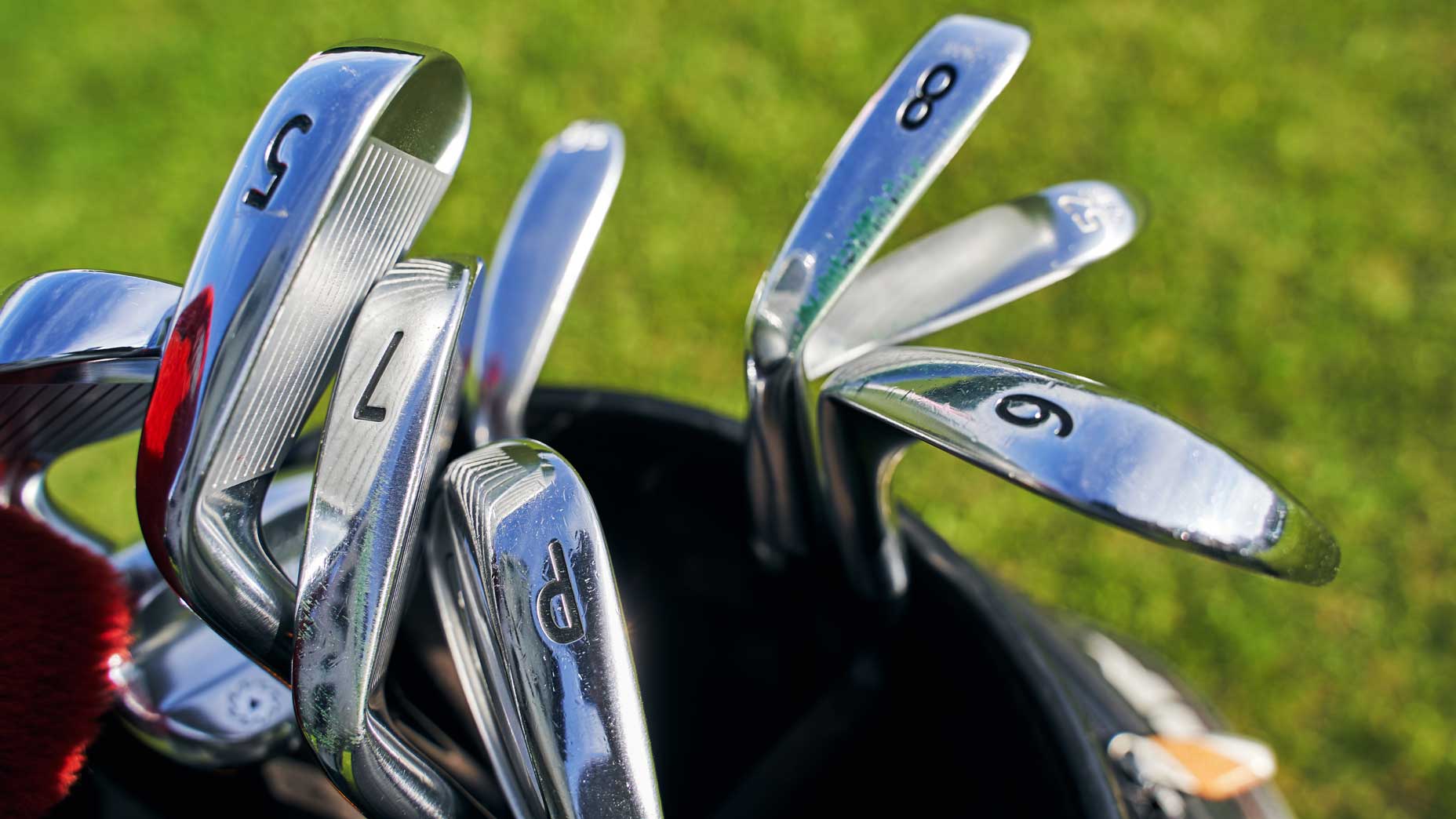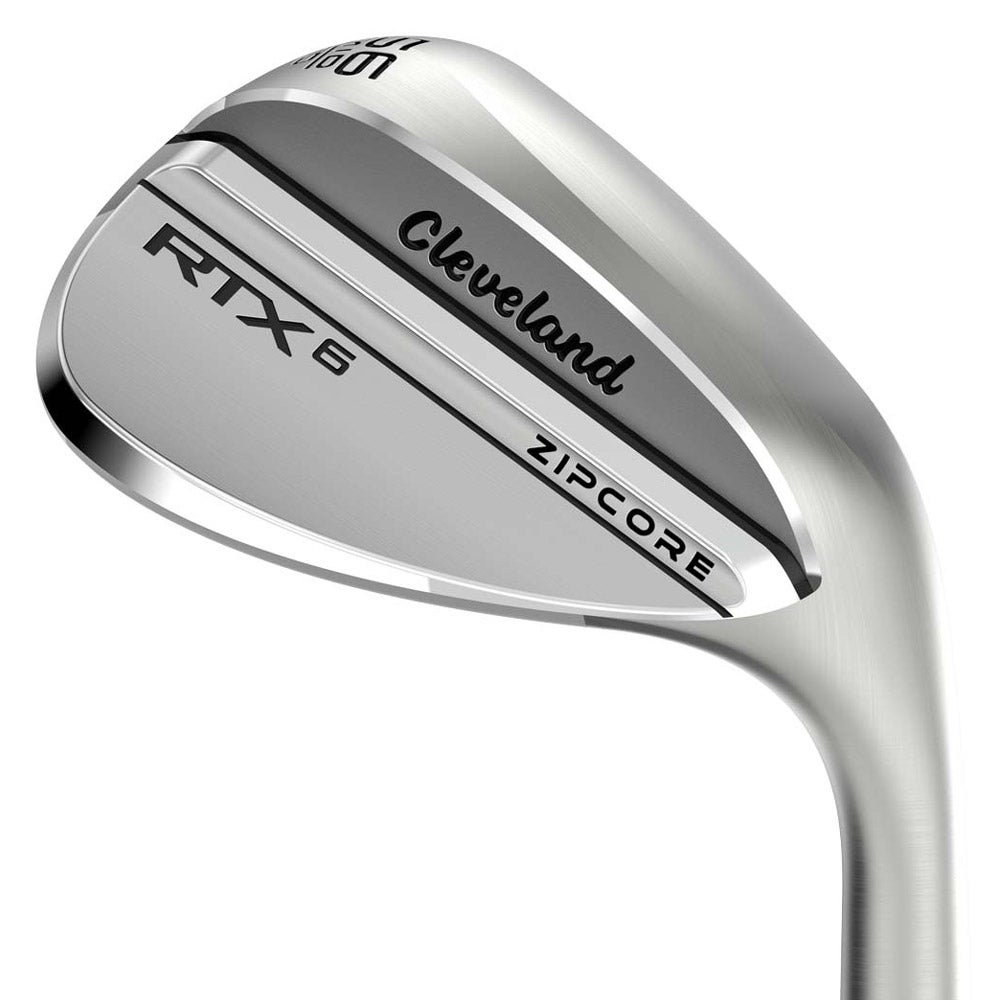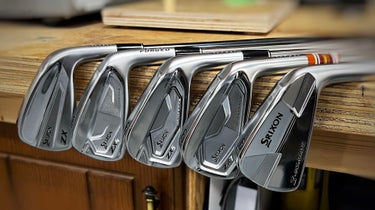
Irons are an important part of your set.
Getty images
Welcome to another edition of the Fully Equipped Mailbag, sponsored by Cleveland/Srixon Golf, an interactive GOLF.com series in which we field your hard-hitting gear questions.
I just started playing golf, and have been using a friend’s set of clubs for my first few rounds. I’m ready to buy my own set, but not sure what order I should buy things. Care to help? – Jeff O., Florida
That’s a great question because we often see new golfers pick up their new set of clubs in the exact opposite order that they should. To simplify the club buying process, we’ve divided it into four simple steps. Now, do you have to do it the way we prescribe? Not necessarily, but the following order is our best advice for newbies wanting to focus less on their gear and spend more time developing their games. Let’s get started:
Step 1: Wedge Your Way In
Who would’ve thought that wedges would lead the pack? But trust us on this one. Starting with wedges sets you up for a smooth transition throughout the rest of your set. Many golfers make the mistake of beginning with the longer clubs and working their way down to the shorter ones. As a result, they end up with huge loft gaps between their short irons and wedges.
All of our market picks are independently selected and curated by the editorial team.
If you buy a linked product,
GOLF.COM may earn a fee. Pricing may vary.

Step 2: Iron Out the Details
Now that you have your wedges, it’s time to find your perfect irons. Most importantly, you need a set of irons that flows harmoniously with your wedges, keeping your lofts and shot distances evenly spaced. Keeping your lofts no more than 5 degrees apart will help you maintain a seamless transition and keep your distances more manageable from one club to another. Lastly, if by chance you find a distance hole at the short club end, don’t overlook adding a gap wedge to keep your set consistent.
Step 3: Hybrids and Woods Go Together
Next on the list are your hybrids and fairway woods. Remember, you’re not just building a club collection; you’re creating a set of tools for certain distances, trajectories, and ball flights. This means you want to ensure your hybrids and woods don’t overlap and produce similar distance results. Start with your middle/long irons as guides to select the hybrids and utility clubs you need, then find the perfect fairway wood(s) to complete the ensemble.
Step 4: Find the Perfect Putter
This step, in all honesty, can be taken whenever you want. If you feel an overwhelming desire to snag a new putter as your first purchase, go ahead and swing for it. But be warned, the putter can sometimes be fickle — it’s easily replaced and you’ll likely go through a few before finding “the one.” This is why we think there’s no need to drain your wallet on a flashy premium putter right off the bat.
Start with something more down-to-earth to ensure the shape, look, and feel is what you prefer. And by the way, we’re not sold on the idea that splurging on an expensive putter automatically means it’s better. Take Cleveland’s HB Soft Milled putters, for example. Most models are under $200, but they look and feel like they’re twice that price.
Cleveland HB Soft Milled putters
$199-$249
Click through to purchase a Cleveland HB Soft Milled putter from Fairway Jockey.
Step 5: Lock and Load a New Driver (when the time is right)
The grand finale — the big stick. Choosing a driver will probably be the highlight of the club-building process, just like it is for everyone else. We suggest saving it for last, not only to build familiarity and appreciation for the rest of your clubs but also to give you ample time to browse and find the driver that fits you perfectly. As a beginner, you might get by without a driver, but as you progress and hone your skills, you’ll soon realize the importance of launching that ball farther than you do with your woods. A driver grants you the power to hit short clubs into greens, leading to lower scores.
The Extra Step: See a Club Fitter
If you’re serious about getting better and you want to see faster results, consider visiting a club fitter before you buy a set of clubs, not after. Most clubs can be adjusted in terms of shafts and grips, but not every wood, iron, or even wedge is easily adjustable in terms of lie angles. But, don’t get us wrong. Anytime to visit a club fitter is better than never at all.
Want to overhaul your bag for 2023? Find a fitting location near you at True Spec Golf. For more on the latest gear news and information, check out our latest Fully Equipped podcast below!










